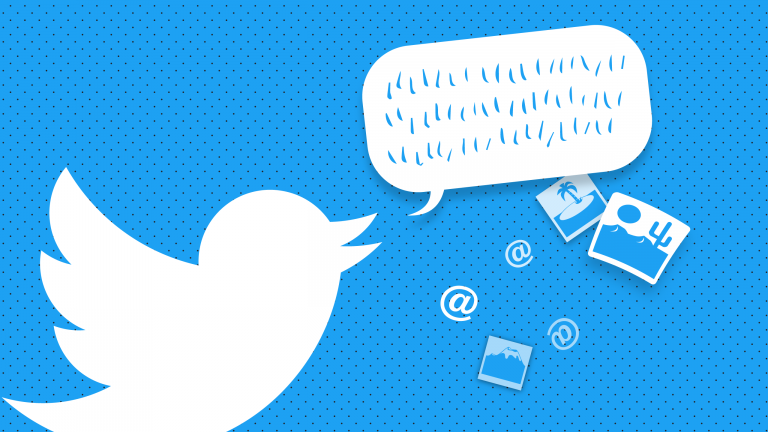A Bit of History
I first became involved in social media back in the mid-1990s, before the term “social media” had even been coined. While the internet had been around a couple decades by then, the World Wide Web was still very new. When I set up my first web server back then there were 2,700 web servers in the whole world. Things were much simpler and the vast majority of web sites were composed of “static pages.” There was no interactivity. You navigated to the site and read the page and looked at the pictures. The pages were handcrafted; the authors wrote their own HTML code to format them.
I was working in healthcare informatics back then designing and prototyping what would become electronic health records (EHRs). When the World Wide Web came along I realized that it would be the ideal set of technologies to build these systems and set about teaching myself how it worked and experimenting with how to build what we now call “Web Apps” that would allow doctors to record information online via the web. This is commonplace now, but we had to invent it back in the ’90s. Looking for a simple application that I could build to get started with online text entry and subsequent viewing from other locations – the essence of an EHR – I decided to build a “chat room.”
I had seen and participated in other chat rooms that I had come across, so I understood their basic functionality, and even had some ideas of how to improve them so I set about searching for source code to see how they had been built. (Almost everything on the web was open source back then.) They had essentially all been built in a language called Perl and ran on Linux servers. That posed a bit of a problem for me as my Server was a Macintosh (before Macs were Unix) and there was no Perl for Macs. I persevered and extended a system called HyperCard, with which I had been building EHR prototypes for some time, and launched my chat room.
It turns out to have been the first such application to run on Mac web servers, and was also the first web app to convert text smilies like 🙂 into graphical emoticons. My chat room software had another unique (at the time) feature I called “whisper” that let you send a private message to another user within the chat. My open source chat software was even published on the CD ROM that accompanied a book on building web sites at the time.¹
By today’s standards my little chat room was very primitive. But after posting a link to it in another open chat room people started showing up and soon we had a few dozen “regulars” who would pop in to chat almost every day. A strange thing happened at that point. My software became a community. It was then that I realized that the World Wide Web was about to change – from a document distribution system to an interpersonal communication tool.
Virtually all of the problems and benefits of such an open social media system with which we are familiar today quickly manifested themselves, albeit on a smaller scale. I had one “rule” for my chat room and that was “be polite.” Beyond that anything was allowed. And yet we had trolls, who either in the open chat or via whispers would harass users. I ended up having to manually block the worst of these when they would not heed my warnings. It wasn’t all negative, of course, and I also developed a life-long collegial friendship with one of the chatters.
Then as now, as the creator and administrator of the site I had access to information that most users do not realize is inevitable from the way such software works. For example, I could if I chose to, read other users’ private whispers. (I did not, unless asked to re: harassment.) I could determine users’ physical location via their IP addresses as this was before VPNs. Normally there was no reason to, but on one occasion we had a chatter who was threatening suicide. While keeping her online chatting I traced her to her university, contacted their campus safety department, and helped them locate which lab she was in. She did indeed have a history and risk of suicide and we saved her that day. It was a harrowing couple of hours, I can tell you.
Because maintaining and moderating became too time consuming and I had learned all that I wanted from developing the chat, I eventually shut it down. In the years since I have built many other web sites and apps, and software that makes it easier for developers to build their own social media sites. We have had to deal with issues of scalability far beyond the couple dozen users of those days, and levels of trolling, hacking, and denial of service which were unimaginable then. Despite this, the basics of human nature in an online community are the same today as they were then. Most people are good, and want to build communities together online. They want to be able to express themselves freely. And control how public or private their communications are.
While the vast majority of social media users today are good kind people, the trolling has become institutionalized and weaponized. Hoards of bots and users intent on destroying a community can and are deployed quickly on the battlefield of public discourse. Distributed Denial of Service (DDS) attacks are so commonplace that several large businesses have arisen to protect sites from it. And web sites face a daily barrage of hacking attempts bent on taking down sites, stealing user data, and otherwise destroying their enterprise. Frankly the amount of effort involved in fighting this tech destruction industry has stopped me on several occasions from deploying large-scale web presences. While I have several ideas and prototypes in my portfolio, the amount of effort involved to deploy such systems today is herculean and expensive. And well beyond what is possible in my spare time. (Perhaps I will reconsider after I retire next year.)
In closing, I would like to ask for you to not take Gab and its creators for granted. Having walked their path I can assure you that it is much harder and more work than it looks like.

Dr. Vullo (@vullo) is a professor in the newly created School of Information (formerly the Department of Information Sciences and Technologies) at the Rochester Institute of Technology (RIT) and creator of the Minor in Web Design and Development. He has extensive experience in the areas of web development, information sciences, and education, as well as medical informatics, dental informatics and education application development. Vullo is the creator and primary developer of Molly, a PHP web framework for the server-side development of virtual communities, electronic health record components, mobile web apps, distance learning tools, online communities, and myriad other web applications and services. Dr. Vullo’s current research is in Alternate Realities applications development.





